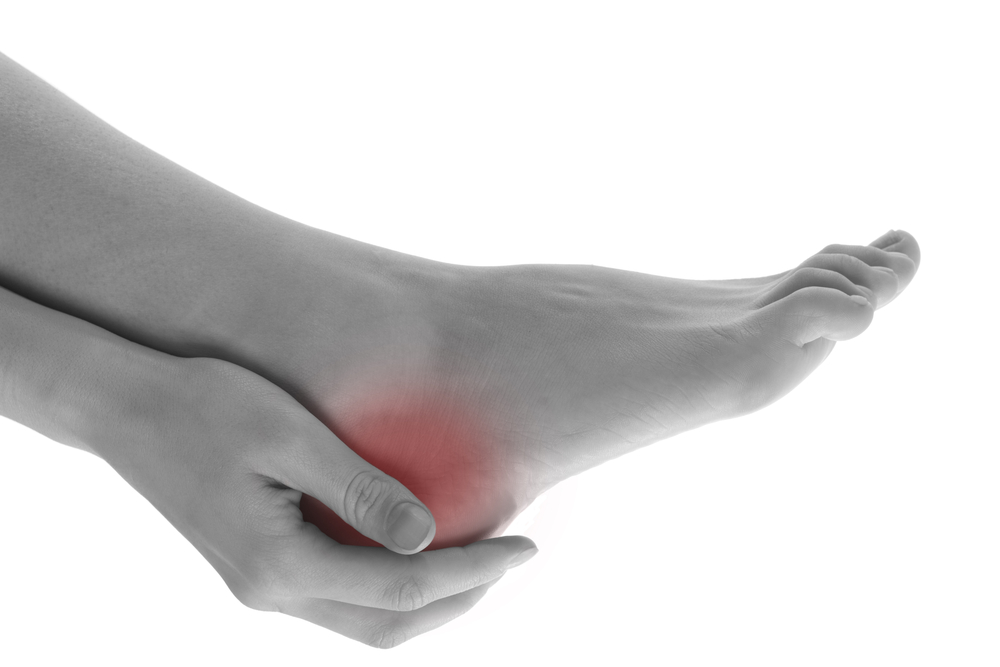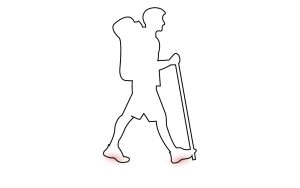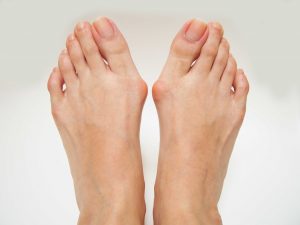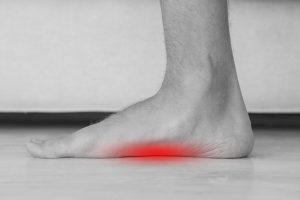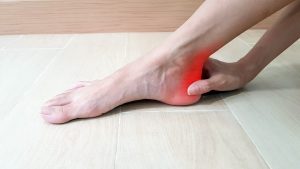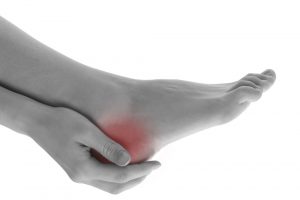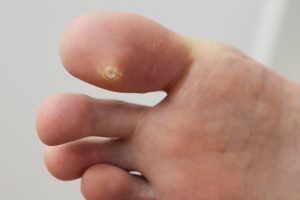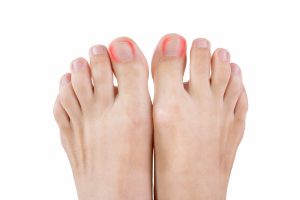Ankle Instability Treatment How do we treat ankle instability? When your ankle is injured, rehabilitation is crucial and starts the moment your treatment begins. Your specialist […]
Heel Pain Syndrome
Heel Pain
What is heel pain?
Heel pain is a common foot condition, it is usually felt either under the heel
or just behind it. The pain in the heel of your foot usually builds up gradually and gets worse over time, this can worsen when you place weight on your heel.
In most cases, only one heel is affected, although estimates suggest that around a third of people have pain in both heels.
It is typical to feel the pain first thing in the morning, or when you first take a step after a period of inactivity. Walking usually improves the discomfort, but it often gets worse again after walking or standing for a long time.
Some people may limp or develop an abnormal walking style as they try to avoid placing weight on the affected heel.
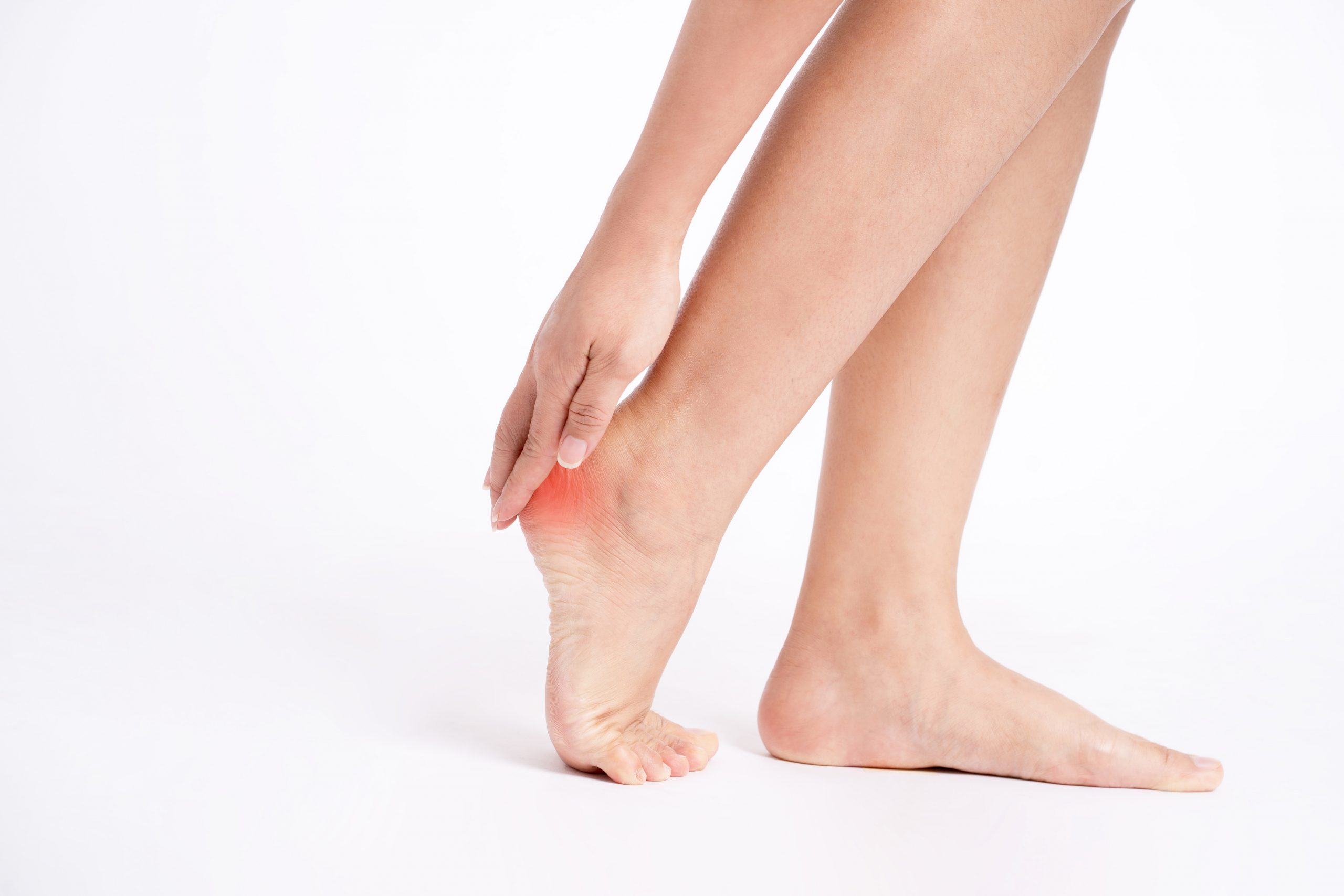
Causes of heel pain:
Plantar fasciitis is the most common cause of heel pain.
The plantar fascia is a tough and flexible band of tissue that runs under the sole of the foot. It connects the heel bone with the balls of the foot, and acts as a kind of shock absorber.
Causes of plantar fasciitis include sudden damage, or damage that occurs over many months or years, can cause tiny tears (micro tears) to develop inside the tissue of the plantar fascia. This can cause the plantar fascia to thicken, resulting in heel pain.
The surrounding tissue and the heel bone can also sometimes become inflamed. However, there are many other causes of heel pain and a specialist at Podogo can help identify the correct diagnosis and underlying cause.
Flat feet are when the arches on the inside of your feet are flattened, allowing
the entire soles of your feet to touch the floor when you stand up, which can
also contribute to heel pain.
There are however many other causes of heel pain, our specialist team at Podogo can identify the correct diagnosis and underlying cause. This may include:
- Flat feet
- Injury/trauma
- High Arched (Pes Cavus) Feet
- Tight Calves
- Plantar Fascia Tear
- Bursitis
- Heel bone fracture
- Plantar Fasciitis
- Nerve Entrapments
- Back Pain
- Obesity
- Heel spur – find out more information on heel spurs
Diagnosing heel pain:
Our heel pain specialists will perform a thorough examination. This may include foot posture and gait analysis, MRI scan or ultrasound scan if required. This is to ensure the correct diagnosis of the heel pain and underlying condition is achieved before any treatment is initiated.
The key is to identify inflammation or tear of fascia or local bursitis that could be the cause of the heel pain. We can also identify rare conditions or poor foot posture, leg length discrepancy or back problems that can cause a heel complaint.
Heel pain Treatment:
Plantar fasciitis heel pain treatment may include:
- Gait analysis and custom orthotics – Orthotics have been proven to aid with plantar fasciitis symptoms within one – three months. The orthotics support the arch and cushion the heel region.
- Shockwave therapy – The shockwave therapy treatment is typically administered once a week for three weeks, though your specialist may suggest further sessions. The mechanical low energy sound waves work by increasing the blood flow around the painful region, promoting healing.
- Steroid injections – Steroid injections are typically administered under ultrasound guidance. They can help reduce inflammation and pain around the heel.
- PRP injections – A sample of your own blood is collected and added to the PRP machine, the sample is spun at a very high speed that separates the different type of blood cells. The plasma and platelets are then drawn out and injected to the affected area under ultrasound guidance.
Frequently asked questions
The most common condition of heel pain is plantar fasciitis but there could be many more causes. Other causes of heel pain could be a heel fracture, fat pad inflammation, or other soft tissue structures. The typical cause of heel pain will develop because of sudden increased overuse. For example, training for a marathon or walking long distances in flat shoes.
If you see a podiatrist they should be able to diagnose the condition and direct you to the most effective treatments.
There are many ways to treat heel pain. For severe cases you need to wear a special walking boot and crutches. In other circumstances there are a mixture of treatments including orthotics to fit inside your shoes, shockwave therapy, or injections. Resting and reducing activities can also help.
Some stretches can help with heel pain. Calf muscle stretches help reduce foot pressure. You can do these by slowly dropping your heel off a step while holding onto something. Other stretches involving pulling your toes up can stretch the structures under the foot. If you roll a towel and place it under your toes while standing this will have this effect.
Schedule an Appointment
Related Blogs
Flatfoot Treatments
Flatfoot Treatment Flatfoot Treatment If you experience symptoms with flexible flatfoot, the flexible flatfoot surgeon may recommend non-surgical treatment options. Activity Modifications: Cut down on activities that […]
Morton’s Neuroma Treatment
Morton’s Neuroma Treatment Morton’s Neuroma Treatment How do we treat Morton’s neuroma: Non-surgical Morton’s neuroma treatments: We would aim to resolve the pain caused by Morton’s […]
Hammertoe Correction
Hammertoe Correction Hammertoe Correction Toe Deformity Treatment Toe deformities can cause significant pain and difficulty in wearing shoes comfortably. The toe deformity progresses over time until […]
Bunion Treatment
Bunion Treatment Bunion Treatment Bunion surgery techniques have developed over the past two decades producing procedures that produce consistent and reproducible outcomes. It is not uncommon […]
Gait Analysis & Orthotics
Gait Analysis Podogo utilises video gait analysis with specialist software designed to achieve the most accurate diagnosis of the way we walk and run. The major […]
Flat Feet
Flexible Flat Feet What is flat foot? Flatfoot is often a complex disorder, with diverse symptoms and varying degrees of deformity and disability. There are several […]
Tendon Problems
Achilles Tendon Problems What is the Achilles Tendon? A tendon is a cord of flexible, thick collagen tissues which joins a muscle to a bone. The […]
Heel Pain Syndrome
Heel Pain What is heel pain? Heel pain is a common foot condition, it is usually felt either under the heel or just behind it. The […]
Verrucae/wart & corn removal
Wart & Verrucas What is a wart & verruca? A wart is an infection in the top layer of the skin caused by the HPV virus. […]
Ingrown toe nail removal surgery
Ingrown Toe Nail What is an ingrown toenail? Ingrown toenails are a common condition in which the side of a toenail grows into the skin , […]

